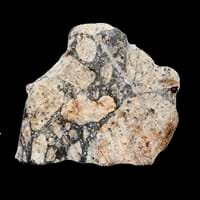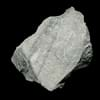Definition
Slate is a fine-grained, foliated, homogeneous metamorphic rock derived from an original shale-type sedimentary rock composed of clay or volcanic ash through low-grade regional metamorphism
Breccia is a rock consisting of angular fragments of stones which are cemented by finer calcareous material
Discoverer
Unknown
Unknown
Etymology
From Old French esclate, from esclat (French éclat)
From Italian, literally gravel, Germanic origin and related to break
Class
Metamorphic Rocks
Sedimentary Rocks
Sub-Class
Durable Rock, Medium Hardness Rock
Durable Rock, Hard Rock
Group
Not Applicable
Not Applicable
Other Categories
Fine Grained Rock, Opaque Rock
Coarse Grained Rock, Medium Grained Rock, Opaque Rock
Texture
Foliated
Brecciated, Clastic
Color
Black, Brown, Buff, Green, Light to Dark Grey, Purple, Red, Shades of Blue
Beige, Black, Blue, Brown, Buff, Green, Grey, Orange, Pink, Purple, Red, Rust, White, Yellow
Durability
Durable
Durable
Scratch Resistant
Yes
Yes
Appearance
Dull
Layered, Banded, Veined and Shiny
Interior Uses
Bathrooms, Decorative Aggregates, Entryways, Floor Tiles, Flooring, Homes, Hotels, Interior Decoration, Kitchens, Stair Treads
Countertops, Decorative Aggregates, Entryways, Floor Tiles, Flooring, Homes, Hotels, Interior Decoration
Exterior Uses
As Building Stone, As Facing Stone, Garden Decoration, Paving Stone
As Building Stone, As Facing Stone, Paving Stone, Garden Decoration, Office Buildings
Other Architectural Uses
Curbing
Curbing
Construction Industry
As Dimension Stone
As Dimension Stone, Construction Aggregate, Landscaping, Roadstone
Medical Industry
Not Yet Used
Not Yet Used
Antiquity Uses
Artifacts, Monuments, Sculpture, Small Figurines
Artifacts, Sculpture
Commercial Uses
Blackboards, Commemorative Tablets, Laboratory bench tops, Standard material for the bed of Billiard table, Standard material for the beds of Pool and Snooker table, Tombstones, Used in aquariums, Writing Slates
Creating Artwork, Gemstone, Jewelry
Types
Not Available
Collapse Breccia, Fault Breccia, Flow Breccia, Pyroclastic Breccia, Igneous Breccia and Impact Breccia
Features
Easily splits into thin plates, Surfaces are often shiny, Very fine grained rock
Available in Lots of Colors and Patterns, Clasts are smooth to touch
Archaeological Significance
Monuments
Used
Not Yet Used
Famous Monuments
Data Not Available
Not Applicable
Famous Sculptures
Data Not Available
Data Not Available
Pictographs
Used
Not Used
Petroglyphs
Used
Not Used
Formation
Slate is a low grade metamorphic rock that is generally formed by metamorphosis of mudstone or shale, under relatively low pressure and temperature conditions.
Breccia is a clastic sedimentary rock which is composed of broken fragments of minerals or rock which are cemented together by a fine-grained matrix and it forms where broken, angular fragments of rock or mineral debris accumulate.
Mineral Content
Apatite, Biotite, Chlorite, Feldspar, Graphite, Hematite, Kaolinite, Magnetite, Pyrite, Tourmaline, Zircon
Calcite, Clay, Feldspar, Phosphates, Quartz, Silica
Compound Content
Aluminium Oxide, CaO, Iron(III) Oxide, Potassium Oxide, MgO, Sodium Oxide, Silicon Dioxide, Titanium Dioxide
Aluminium Oxide, Ca, NaCl, CaO, Iron(III) Oxide, Potassium Oxide, Sodium Oxide, Silicon Dioxide, Titanium Dioxide
Types of Metamorphism
Burial Metamorphism, Cataclastic Metamorphism, Regional Metamorphism
Burial Metamorphism, Cataclastic Metamorphism
Types of Weathering
Biological Weathering, Chemical Weathering, Mechanical Weathering
Biological Weathering, Chemical Weathering, Mechanical Weathering
Types of Erosion
Coastal Erosion, Glacier Erosion, Water Erosion, Wind Erosion
Chemical Erosion
Grain Size
Very fine-grained
Medium to Coarse Grained
Fracture
Splintery
Uneven
Streak
Light to dark brown
White
Porosity
Less Porous
Less Porous
Luster
Dull
Dull to Pearly
Compressive Strength
Not Available
Cleavage
Slaty
Non-Existent
Toughness
1.2
Not Available
Specific Gravity
2.65-2.8
2.86-2.87
Transparency
Opaque
Opaque
Density
2.6-2.8 g/cm3
0 g/cm3
Specific Heat Capacity
Not Available
Resistance
Heat Resistant, Impact Resistant, Pressure Resistant, Wear Resistant
Heat Resistant, Impact Resistant, Pressure Resistant, Wear Resistant
Deposits in Eastern Continents
Asia
China, India, Turkey
China, India, Kazakhstan, Mongolia, Russia, South Korea, Uzbekistan
Africa
Not Yet Found
Namibia, Nigeria, South Africa
Europe
Belgium, France, Germany, Italy, Norway, Portugal, Spain, United Kingdom
Austria, Denmark, Germany, Great Britain, Netherlands, Norway, Poland, Sweden, Switzerland, United Kingdom
Deposits in Western Continents
North America
USA
Barbados, Canada, Mexico, Panama, USA
South America
Brazil
Brazil
Deposits in Oceania Continent
Australia
Not Yet Found
New South Wales, New Zealand
All about Slate and Breccia Properties
Know all about Slate and Breccia properties here. All properties of rocks are important as they define the type of rock and its application. Slate belongs to Metamorphic Rocks while Breccia belongs to Sedimentary Rocks.Texture of Slate is Foliated whereas that of Breccia is Brecciated, Clastic. Slate appears Dull and Breccia appears Layered, Banded, Veined and Shiny. The luster of Slate is dull while that of Breccia is dull to pearly. Slate is available in black, brown, buff, green, light to dark grey, purple, red, shades of blue colors whereas Breccia is available in beige, black, blue, brown, buff, green, grey, orange, pink, purple, red, rust, white, yellow colors. The commercial uses of Slate are blackboards, commemorative tablets, laboratory bench tops, standard material for the bed of billiard table, standard material for the beds of pool and snooker table, tombstones, used in aquariums, writing slates and that of Breccia are creating artwork, gemstone, jewelry.









